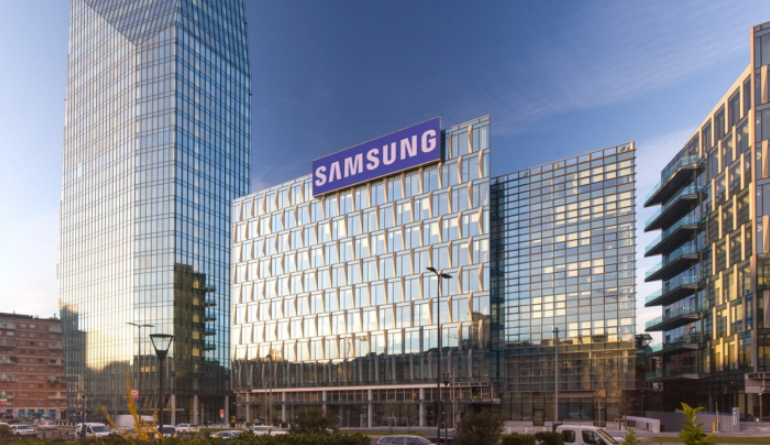 INFRA
INFRA
 INFRA
INFRA
 INFRA
INFRA
Samsung Electronics Co. Ltd. said today that its third-quarter profit fell by more than 31% from a year ago amid geopolitical uncertainty that’s likely to persist and dampen demand for consumer products until at least early next year.
The company, which is the world’s biggest manufacturer of memory chips and smartphones, reported an operating profit of 10.85 trillion won ($7.7 billion) in its third quarter, down from 15.8 trillion won a year ago. That marks the first year-over-year profit decline for the company in almost three years.
In addition, it reported a net profit of 9.38 trillion won ($6.6 billion), down 24% from a year ago. Analysts were projecting a net profit of 9.4 trillion won.
On the bright side, Samsung did at least manage to keep growing. It reported total revenue for the quarter of 76.8 trillion won, up 4% from a year earlier.
Samsung’s semiconductor business, which accounts for the majority of its revenue and profit, saw its profit decline by almost 50%, to 5.12 trillion won, amid what it said was weakening consumer spending power. According to the company, that meant reduced demand for computer chips from electronics makers, server firms and cloud computing providers. Samsung manufactures both dynamic random-access memory, which is used in personal computers and servers, and NAND flash memory chips for smaller devices such as smartphones and USB drives.
“Customers’ inventory adjustments exceeded market expectations and demand for consumer products continued to weaken,” Samsung said in a statement.
Within the semiconductor segment, Samsung said its contract chip manufacturing business posted record quarterly sales and operating profit thanks to “improving yields in advanced nodes,” though it didn’t provide exact numbers.
Samsung’s mobile business, meanwhile, delivered an operating profit of 3.24 trillion won, down from 3.36 trillion won in the same quarter one year ago. However, that was up from the 2.62 trillion won profit the business reported three months ago. Samsung said the increase was driven by sales of its flagship smartphones, including its foldable phones, plus wearable devices.
As for Samsung’s display business, it delivered 1.98 trillion in operating profit. That was up both year-on-year and quarter-on-quarter, thanks to growth in demand that was attributed to the launches of new models by major smartphone brands. On the other hand, Samsung’s large display panel business posted a loss because of slowing TV and PC monitor sales.
“Samsung had a good quarter giving the headwinds it is facing,” said Holger Mueller of Constellation Research Inc. “All eyes will be on its performance in the fourth quarter. That’s when Jay Y. Lee will officially become its executive chairman, and the challenge will be demand for memory chips.”
Samsung could struggle to turn things around, as declines in the memory chip industry have prompted many of its competitors in the industry to reduce capital spending, Bloomberg reported.
Some of Samsung’s biggest rivals in the market, including SK Hynix Inc., Kioxia Holdings Corp. and Micron Technology Inc., have all announced plans either to cut capital spending or to reduce production output. They’re struggling to shift record stockpiles of chips that were accumulated earlier this year, when production accelerated to meet soaring demand that stemmed from the COVID-19 pandemic.
However, Hynix said the memory chip market now faces “unprecedented” deterioration amid rapidly declining shipments of smartphones and personal computers. The South Korean chipmaker said it plans to respond by halving its capital expenditures over the next year.
Samsung has indicated it will take a more cautious approach. Bloomberg cited a company executive as saying that output reductions are not currently on the table. Rather, the company plans to take its cue from the market and “flexibly” manage production capacity.
Lee Seung-woo, analyst at Eugene Investment & Securities, told Bloomberg that it’s hard to see demand recovering at the moment, adding that it makes sense to have “somewhat flexible output reduction plans.”
For its part, Samsung expressed more optimism about the potential for chip demand to recover in the second half of next year, citing “resumed installations of data centers” and the growing adoption of DDR5, the next generation of DRAM, in more advanced central processing units.
THANK YOU